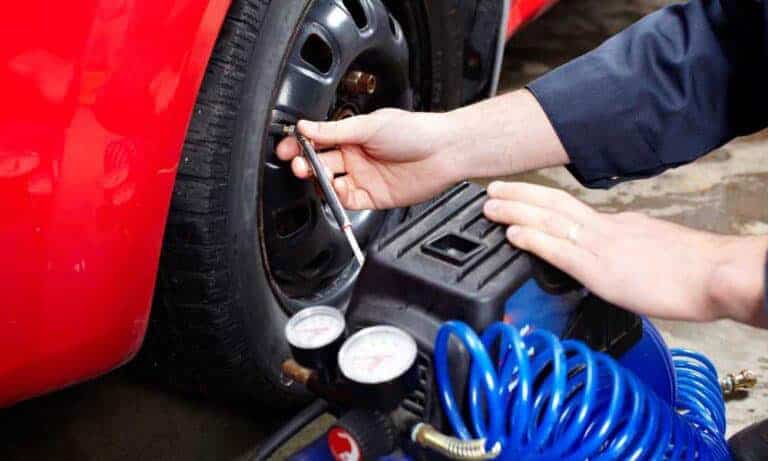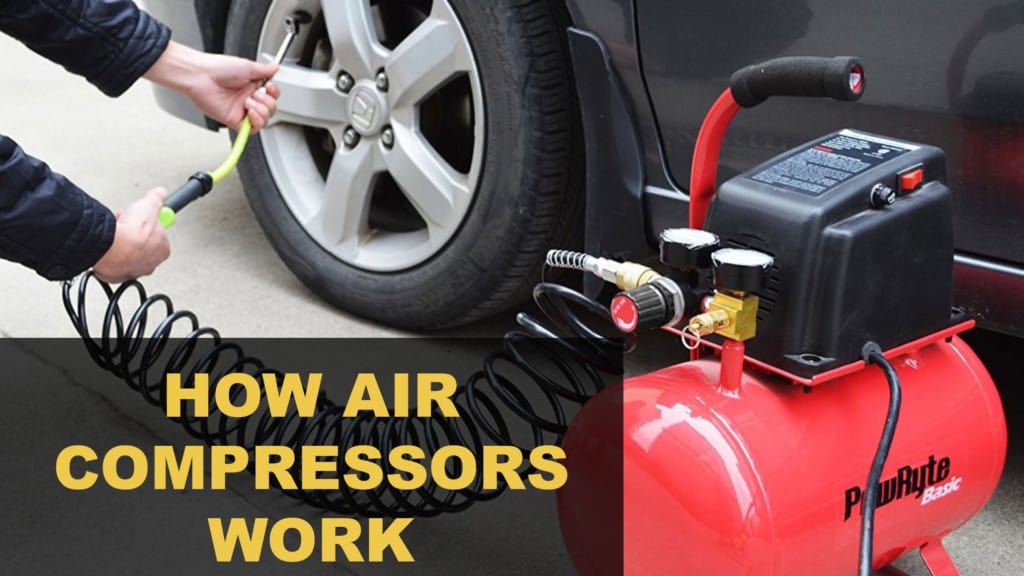Have you ever wondered how an air compressor works? I know I have! Air compressors are pretty amazing machines, and they’re used in many different ways. In this article, I’ll explain how an air compressor works in a way that’s easy to understand. So, let’s dive right in!
What’s an Air Compressor?
First off, let’s talk about what an air compressor is. It’s a machine that takes in air from the surrounding environment, compresses it, and then stores it in a tank. This compressed air can then be used for various tasks, like inflating tires, powering tools, or even painting.
The Main Parts of an Air Compressor
Now that we know what an air compressor is, let’s take a look at its main parts. There are three main parts to an air compressor:
- Motor: The motor is what powers the compressor. It can be electric, gas-powered, or even diesel-powered.
- Pump: The pump is what compresses the air. There are two main types of pumps: reciprocating (piston) and rotary (screw or vane). I’ll explain more about these later.
- Storage Tank: The storage tank is where the compressed air is stored. It’s usually made of steel and can hold different amounts of compressed air depending on its size.
How the Air Gets Compressed
Alright, now that we know the main parts of an air compressor, let’s talk about how the air actually gets compressed. There are two main types of air compressors: reciprocating and rotary. I’ll explain how each one works.
Reciprocating Air Compressors
Reciprocating air compressors use pistons to compress the air. Here’s how it works:
- The motor powers the pump, which moves a piston inside a cylinder.
- As the piston moves down, it creates a vacuum that sucks air into the cylinder through an intake valve.
- When the piston moves back up, it compresses the air and forces it through an exhaust valve into the storage tank.
This process is repeated over and over, and the compressed air builds up in the storage tank. Reciprocating air compressors can be either single-stage or two-stage, which means they have one or two pistons, respectively. Two-stage compressors can compress air to a higher pressure than single-stage ones.
Rotary Air Compressors
Rotary air compressors use screws or vanes to compress the air. Here’s how they work:
- The motor powers the pump, which has two rotors (either screws or vanes) that mesh together.
- As the rotors turn, they trap air between them and compress it.
- The compressed air is then pushed into the storage tank.
Rotary air compressors are usually more efficient and quieter than reciprocating ones, but they can also be more expensive.

How Compressed Air is Used
Now that we know how an air compressor works, let’s talk about some of the things you can do with compressed air. I use air compressors for all sorts of tasks, and they’re incredibly versatile. Here are some examples:
- Inflating tires: One of the most common uses for an air compressor is inflating tires. Just attach an air hose with a tire inflator attachment, and you can easily inflate car, bike, or even tractor tires.
- Powering tools: Compressed air is great for powering tools like nail guns, impact wrenches, and air ratchets. I’ve used an air compressor to help build a deck, and it made the job so much easier!
- Painting: If you’ve ever painted a room, you know that using a paint roller can be time-consuming. With an air compressor and a paint sprayer, you can get the job done much faster and with a smoother finish.
- Cleaning: Compressed air is also great for cleaning. I’ve used it to blow dust out of my computer, clean out my car’s air vents, and even clear debris from my garage floor.
- Sandblasting: If you need to remove rust or old paint from a surface, an air compressor and a sandblasting attachment can make the job much easier. It’s a great way to restore old furniture or car parts.
Safety Tips for Using an Air Compressor
It’s important to remember that air compressors can be dangerous if not used properly. Here are some safety tips to keep in mind:
- Wear safety gear: Always wear eye and ear protection when using an air compressor. Gloves and a dust mask may also be necessary, depending on the task.
- Don’t use damaged equipment: Always inspect your air compressor, hoses, and attachments for damage before using them. If you find any issues, fix them or replace the equipment.
- Use the right pressure: Make sure you’re using the correct air pressure for the task at hand. Too much pressure can damage your tools or cause accidents.
- Turn off and unplug: When you’re done using your air compressor, turn it off and unplug it. This will help prevent accidents and save energy.
- Store properly: Store your air compressor in a cool, dry place away from moisture and heat. This will help keep it in good working condition.
Conclusion
Now you know how an air compressor works and some of the many things you can do with one! Air compressors are really useful tools, and they can make a lot of tasks easier and more efficient. Just remember to always follow safety guidelines when using an air compressor, and have fun with your projects!
